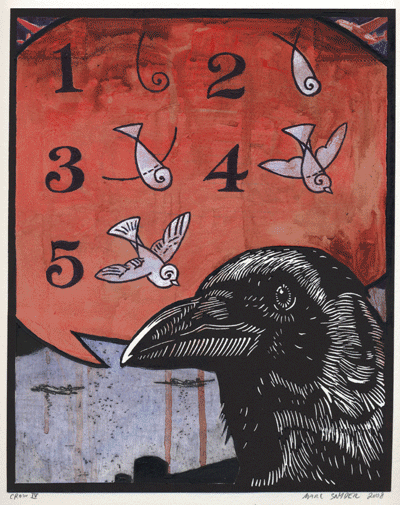
Athena's Night, Jim Dine, 1995
charcoal and isolated areas of pastel, 79 1/8" x 41"
Drawing is not an exercise."I don't make sketches. I don't make studies. A drawing is a drawing, a painting is a painting. There are certain subjects I don't paint. I don't paint portraits. I don't believe I have ever painted a self-portrait, but I've drawn myself a lot with great elaborateness. There is a lot of rubbing out, a lot of bringing back, and certainly working on it for many months. A drawing is a labor for me, not in a bad way, but in an intense way. I am able to search through drawing, for the age and personality. I look at the way flesh falls. I want to get it right, but right doesn't mean just anatomically correct, it means to get it right so it's convincing to me as an invention of the face. I have a total connection between my hand and my eye - it's just that I can't see sometimes. Sometimes I can see perfectly - by seeing I mean it's like an inner eye. It's not just two eyes seeing, it's the memory of how things look or the memory of how I want them to look. I'm very ambitious for my drawing. When I'm taking out and putting back, I'm not building necessarily - I'm taking out, hoping the next pass across the page will be a
touchdown. I am not erasing because I couldn't get the object accurately, but because I am hoping for
grace to come to me. I don't think hard work makes a good drawing. I have had a lot of students who worked very hard and after two weeks of drawing would turn out a drawing that was completely dead, even though it showed rigorous looking. It's not what I want. If I erase, it's because I didn't get what I wanted the first time, and if I don't get it by the twentieth time let's say, and the paper is halfway gone, then I start to patch the paper. Drawing is not an exercise. Exercise is sitting on a stationary bicycle and going nowhere. Drawing is being on a bicycle and taking a journey. For me to succeed in drawing, I must go fast and arrive somewhere. The quest is to keep the thing alive - the drawing
and the state of grace. I get the endorphin high by the intensity of my looking and it is then that I leave my body."
"I need a lot of time to make a drawing. I always needed time for my incubation process, but now I need more time because I want so much more from the work and from my romantic unconscious. Drawing is the medium which has been the blood of my life. It allows me and others who are open to human emotion to experience a straightforward view without artifice, but with poetry."
excerpts from Jim Dine's essay "Putting Down Marks (my life as a draftsman)"










